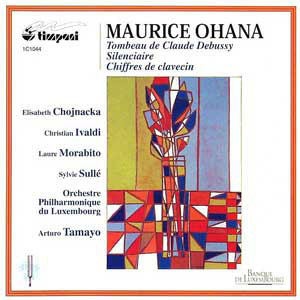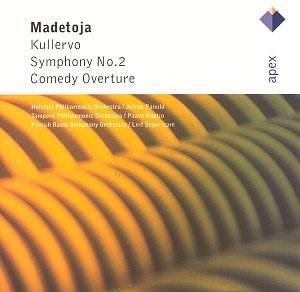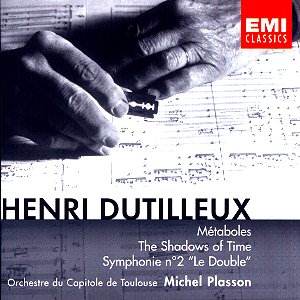 Composer: Maurice Ohana
Composer: Maurice Ohana
Works: Tombeau de Claude Debussy; Silenciaire; Chiffres de Clavecin
Performers: Sylvie Sullé (soprano), Christian Ivaldi (piano), Laure Morabito (zither), Elisabeth Chojnacka (harpsichord), Luxembourg Philharmonic Orchestra conducted by Arturo Tamayo
Recording: Recorded in Luxembourg Conservatoire 1998 DDD Stereo
Label: Timpani
Maurice Ohana, a pivotal figure in the French avant-garde, produced a body of work that often straddles the line between traditional musical forms and radical experimentation. This latest release offers a compelling survey of his contributions, notably the premiere recording of the “Tombeau de Claude Debussy,” alongside two other significant pieces: “Silenciaire” and “Chiffres de Clavecin.” Each work serves as a testament to Ohana’s unique voice, one that evokes the spectral influences of Debussy while simultaneously rejecting his harmonic conventions in favor of a more fragmented, textural approach.
The “Tombeau de Claude Debussy” presents a tapestry of sound that deftly combines the ethereal qualities of a wordless soprano with the rare timbres of the zither, piano, and a chamber orchestra rich in strings and percussion. The work’s seven movements are marked by stark contrasts and a constant exploration of sonority. Ohana’s use of the zither is particularly arresting; its often dissonant pitches create a sense of tension and release that mirrors the emotional landscape of Debussy’s own works, albeit filtered through a modernist lens. The performers, especially Sylvie Sullé, embody this tension with an expressive, if sometimes elusive, vocal line that floats above the intricate orchestration.
Ohana’s “Silenciaire,” described as a “breviary of silence,” pushes the boundaries of auditory perception. The composition, which employs a battery of six percussionists alongside strings, unfolds with a deliberate pacing that emphasizes silence as a musical element. This piece is radical, not just for its instrumentation but for its structural philosophy; moments of intense activity are juxtaposed against stretches of tranquil nothingness. The result is a soundscape that challenges the listener’s expectations, inviting one to reconsider the very nature of musical time. Arturo Tamayo conducts the Luxembourg Philharmonic with a clarity that allows these nuanced contrasts to breathe, though one might argue that the work’s calculated nature may alienate those seeking emotional immediacy.
In “Chiffres de Clavecin,” Ohana ventures into the realm of the harpsichord, an instrument that he uses to create a dialogue with the orchestra that is both jarring and fascinating. Here, the harpsichord’s metallic timbre complements the orchestral fabric, weaving together a complex tapestry of sound. The engineering of this recording is particularly noteworthy; the balance between the harpsichord and orchestra is expertly managed, allowing the intricate details of Ohana’s score to emerge without overwhelming the listener. This piece, while perhaps less radical than the previous two, offers a satisfying culmination of Ohana’s exploration of texture and rhythm, showcasing both the instrument and the ensemble’s capabilities.
Ohana’s oeuvre, while undeniably intriguing, often resists easy categorization. The performances captured in this recording are executed with remarkable precision and artistry, showcasing the talents of both soloists and the orchestral ensemble. While Ohana’s music may not resonate with all listeners on an emotional level, it invites an intellectual engagement that is both rewarding and thought-provoking. The recording stands as a significant addition to the growing catalog of modern French music, providing insight into a composer whose genius is often overshadowed by his contemporaries. The technical prowess of the performers, combined with the superb quality of the recording, renders this disc a valuable resource for those willing to delve into the complexities of Ohana’s artistic vision.



